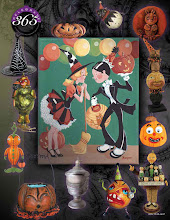
This is a mum I picked up for our front porch in 2007. It was gorgeous, and not to mention huge!
One of the most dependable flowers you can have in the garden- a real trooper-the mum!
The arrival of fall heralds the blooming season of the magnificent chrysanthemum, a flower rich in history and tradition. The original mum, a golden daisy like flower, traces its ancestry to the ancient Chinese and Japanese empires. Today the mum graces gardens, cut flower arrangements and even salads (yes mums taste great), but they were taken much more seriously after T’ao Yuan Ming started it all in China around 500 A.D.
Over long periods of careful cross-pollination and selection, he developed stunning varieties of the flower and when he died, his birthplace was renamed Chuhsien. The City of
When
By 800 A.D. the chrysanthemum had become so prestigious that only royal and noble families were permitted to cultivate it. Among the highest honors that could be bestowed in
In great contrast to this, the “mum” didn’t make much of an impression when traders introduced it to
Today the mum comes in dozens of varieties.
The "Prophets" mums are known as the finest and most reliable group of garden mums offered in
Whether associated with spoons, forks or footballs, or with royalty or immortality, “mum” is the word for beautiful gardens and long-lasting floral arrangements. When you care for them as cut flowers, try to keep their ancient beauty away from such modern-day contraptions as air conditioning, TV sets and heaters. Don’t place them in drafts or direct sunlight. Do watch their water, and replace it when needed. This way, a bouquet of mums can make your day every day for at least a week, maybe two.
http://www.waterloogardens.com/resources/articles/09/mums_history/

















































No comments:
Post a Comment